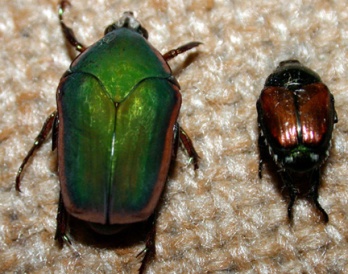Upcoming Events:
July 10: Palmer Amaranth Resistance Field Day, 9 a.m.-1 p.m. (Reg. 8:30 a.m.) Carleton, http://agronomy.unl.edu/palmerJuly 10-11:Sustainable Agronomy Conference, Embassy Suites Downtown/Old Market, Omaha
July 13: Sheep and Goat Workshop, 10 a.m.-4 p.m. (Reg. 9:30 a.m.), Extension Office, North Platte, RSVP: 308-532-2683
July 15: CSI for Youth: Extension Shadow, jrees2@unl.edu
July 17-19: Solar Design and Installation Hands-on Workshop, Lincoln, NE
July 18-19: Good Farmer to Great Manager, Extension Office, Lincoln
July 19: Communicating with Farmers Under Stress, 9-11 a.m., ENREC (former ARDC) near Mead, RSVP: 402-624-8003
July 24: Science and Ag Family Field Day, 9 a.m.-3 p.m., Haskell Ag Lab, Concord
July 30-31: Good Farmer to Great Manager, Extension Office, Grand Island
Crop Updates: I really appreciate all those in ag industry who share what you’re seeing in the fields; it’s a blessing to have a great network of people looking at fields in different areas of the state and sharing what we’re all seeing!
Western bean cutworm (WBC) moths were seen in corn whorls the past week. They’re

Western Bean Cutworm Moth courtesy UNL CropWatch
also showing up in UNL light traps in addition to industry ones. To view the UNL light trap reports near Clay Center, please go to: https://scal.unl.edu/ltr2019.pdf. The light trap near Mead is currently having black light issues, but the report can be viewed at: https://go.unl.edu/2usz and the light trap report from North Platte is at: https://go.unl.edu/a56b. WBC moths prefer laying eggs on upper leaf surfaces in corn that is in the late whorl to early tassel stage. UNL entomologists recommend scouting at 25% of moth flight. It’s unknown how larval survival will be impacted by corn growth stage at this time. Larvae survival is highest when they have fresh tassel tissue and pollen to feed on before moving down to developing ears and silks. Larval survival is lowest when only vegetative tissue is available to feed on. So, the delayed planting and growth in some fields may allow for less western bean cutworm damage in 2019. However, our entomologists say that air and soil temperature can also impact insect development leading to slower development of the insects. UNL Entomologists Tom Hunt and Bob Wright, along with University of Minnesota researchers, developed a degree-day model to predict when WBC moths will emerge to begin mating and laying eggs. In a recent CropWatch article, they were predicting 25% moth flight to occur for the following dates/locations: July 7th in Lincoln; July 11 in Hastings and Ithaca; July 12 in Grand Island and York; July 13 in Clay Center; July 15 in Holdrege, and July 23 in North Platte. Corn expressing VIP3A proteins are highly effective for WBC control. Corn expressing Cry1F (Herculex) proteins may provide some WBC feeding suppression but shouldn’t be relied upon for control. The current UNL economic threshold for treatment is 5-8% of corn plants with eggs or larvae.
Common Rust in Corn: The rainfall, humidity, and wet canopies have allowed for
increased common rust to be seen in corn this past week. I was seeing larger numbers of pustules on lower leaves of plants, but this week could also see pustules occurring in upper canopies. Pustules of common rust are typically brick red in color, larger, more separate, and can appear on both the upper and lower leaf surfaces. Southern rust typically has smaller, orange to tan colored pustules occurring in tight clusters on upper surfaces of leaves. However, the past few years, we’ve seen common rust looking more orange in color, including this year. The best way to confirm for sure if it’s common or southern rust is to check the spores under the microscope, and I’m happy to do that. The spores of common rust will be circular in shape whereas southern rust spores are more oval to football shaped. Samples can also be submitted to the UNL Plant and Pest Diagnostic lab. So far, every sample I’ve looked at has been common rust. Southern rust hasn’t been found further than Georgia and Louisiana to my knowledge right now. We don’t typically recommend fungicides for common rust. It will be important to continue scouting for diseases with the humidity and leaf wetness we’re experiencing this year.
Lawn and Garden Questions: The wet weather has allowed slime mold (gray-black fungal growth on leaves) in patches in lawns in addition to mushrooms in lawns and landscapes. They are harmless and fungicides aren’t effective. They will go away upon drying out and with warmer weather.
Bagworms are out and it’s time to control them if you have them. The following gives more detailed info on their life cycle: https://go.unl.edu/rgju and this YouTube video shows what you’re looking for this time of year on your trees: https://jenreesources.com/2015/06/27/bagworms-in-evergreens/.
Japanese Beetles may be causing holes in Linden trees or rose leaves. They are

Green June Beetle (left) and Japanese beetle (right). Photo via Purdue Entomology.
green/brown beetles with white hairs that look like rows of white spots near each wing. Kelly Feehan in Platte County shares that “applying insecticides to lawns to control grubs will not prevent beetles from feeding on landscape plants. The product ‘Milky Spore’ sold to kill them, does not work. On landscape plants, hand picking or knocking beetles into a bucket of soapy water around 7 PM is the best time of day to do this as it prevents plants producing a distress pheromone that attracts more beetles. Japanese beetle traps work very well – IF you want to attract them to your yard – so traps are best NOT used. If a Linden tree has Japanese beetles, know these trees CANNOT be treated with Imidacloprid or other Neonicotinoid insecticides.” Carbaryl (Sevin) is effective to use for Lindens and landscape plants where it’s not feasible to remove beetles by hand.




































